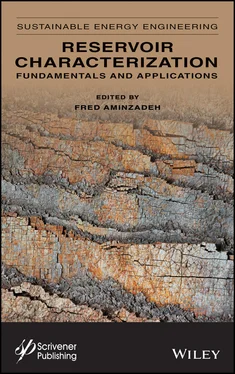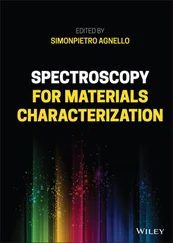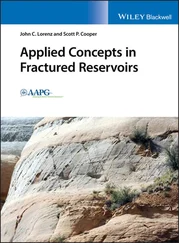463 472
464 473
465 474
466 475
467 476
468 477
469 478
470 479
471 480
472 481
473 482
474 483
475 484
476 485
477 486
478 487
479 489
480 490
481 491
482 492
483 493
484 494
485 495
486 496
487 497
488 498
489 499
490 500
491 501
492 502
493 503
494 504
495 505
496 506
497 507
498 508
499 509
500 510
501 511
502 512
503 513
504 514
505 515
506 516
507 517
508 518
509 519
510 520
511 521
512 522
513 523
514 525
515 526
516 527
517 528
518 529
519 530
520 531
521 532
522 533
523 534
524 535
525 536
526 537
527 538
528 539
529 540
530 541
531 542
532 543
533 544
534 545
535 546
Scrivener Publishing
100 Cummings Center, Suite 541J
Beverly, MA 01915-6106
Sustainable Energy Engineering
Series Editor: Fred Aminzadeh
Scope: This series’s mission is to publish peer-reviewed, original research seeking sustainable methods of worldwide energy production, distribution, and utilization through engineering, scientific, and technological advances in the areas of both fossil fuels and renewable energy. Energy issues cannot be addressed in isolation, without attention to the economy and the environment. Thus, this series introduces the “E cubed” concept, addressing sustainability with a three-pronged emphasis on energy, economy and environment, publishing research in all of these areas, and their intersections, as they apply to global energy sustainability. This unique multi-disciplinary theme allows the introduction of new and cutting-edge processes and technologies across all areas of energy production, transportation, and transmission, including fossil fuels and renewable energy and their intersection with the economy and environment. Papers are invited on any individual topic or those which are interdisciplinary.
Publishers at Scrivener
Martin Scrivener (martin@scrivenerpublishing.com)
Phillip Carmical (pcarmical@scrivenerpublishing.com)
Reservoir Characterization
Fundamentals and Applications
Edited by
Fred Aminzadeh

This edition first published 2022 by John Wiley & Sons, Inc., 111 River Street, Hoboken, NJ 07030, USA and Scrivener Publishing LLC, 100 Cummings Center, Suite 541J, Beverly, MA 01915, USA
© 2022 Scrivener Publishing LLC
For more information about Scrivener publications please visit www.scrivenerpublishing.com.
All rights reserved. No part of this publication may be reproduced, stored in a retrieval system, or transmitted, in any form or by any means, electronic, mechanical, photocopying, recording, or otherwise, except as permitted by law. Advice on how to obtain permission to reuse material from this title is available at http://www.wiley.com/go/permissions.
Wiley Global Headquarters
111 River Street, Hoboken, NJ 07030, USA
For details of our global editorial offices, customer services, and more information about Wiley products visit us at www.wiley.com.
Limit of Liability/Disclaimer of Warranty
While the publisher and authors have used their best efforts in preparing this work, they make no representations or warranties with respect to the accuracy or completeness of the contents of this work and specifcally disclaim all warranties, including without limitation any implied warranties of merchantability or fitness for a particular purpose. No warranty may be created or extended by sales representatives, written sales materials, or promotional statements for this work. The fact that an organization, website, or product is referred to in this work as a citation and/or potential source of further information does not mean that the publisher and authors endorse the information or services the organization, website, or product may provide or recommendations it may make. This work is sold with the understanding that the publisher is not engaged in rendering professional services. The advice and strategies contained herein may not be suitable for your situation. You should consult with a specialist where appropriate. Neither the publisher nor authors shall be liable for any loss of profit or any other commercial damages, including but not limited to special, incidental, consequential, or other damages. Further, readers should be aware that websites listed in this work may have changed or disappeared between when this work was written and when it is read.
Library of Congress Cataloging-in-Publication Data
ISBN 9781119556213
Cover image: Geo/Rock Wall, 31647625 © Pzaxe | Dreamstime.com Cover design by Kris Hackerott
Set in size of 11pt and Minion Pro by Manila Typesetting Company, Makati, Philippines
Printed in the USA
10 9 8 7 6 5 4 3 2 1
What is reservoir characterization? As you will see from this book, this is a very advanced topic so let’s break it down a bit and start form the basics. What is a reservoir? This is ‘a place where something is kept in store’. And what is characterization? That is ‘to describe the character or quality’ all according to the Webster dictionary. So, we are arrived at: ‘describe the character of something that’s kept in store’. It seems relatively benign and easy but ‘the devil is in the details’ is perhaps the best way to get the readers intrigued and immersed in this topic. So, we are left wondering what are these details where the devil resides? And here starts the story…..
In fact, a better wording would be ‘Subsurface Reservoir Characterization’ or SRC. There have been on the order of thousands of studies in reservoir characterization over the life time of this field. As such, this topic has evolved and matured with many learnings. As illustrated in this book, there are now well established and tested workflows SRC and I‘d like to go over some aspects of these understandings and workflows.
First, it is key to understand that SRC is a continuously changing, multi-discipline and multi-scale topic. For continuously changing a good example would be the recent impact of say machine learning methods. I have learned that if our data quality is good enough and there are physical relationships between reservoir data and properties, machine learning can be an excellent way to quickly uncover relationships in a multi-variable universe. However, once again, even here, the devil is in the details…. Multi-discipline is a word we easily use but have difficulty implementing. In many projects the geologist is tasked with building a static reservoir model and then passing it on to the reservoir engineer to build a dynamic model and history match production. However, it has been challenging to form a loop versus a linear workflow or for the dynamic model to be updated with new static information or cover a range of possible models that fit the data…… As for multi-scale, the discipline involves integration of data from a wide range of data, say, nanometer (electron microscope), to centimeter (cutting and core samples), to decimeter (well log), to meter (seismic) scale. Spatially most of these data are acquired within a small portion of one or several wells and geophysical data gives the capability to extrapolate away from the wells with lower resolution. Due to uncertainties in the data, rapid variations in the subsurface, and sparse sampling multi-scale integration can be a challenging task. There is a good discussion of “SURE Challenge” in the book where the author addresses the above mentioned challenges of integration incolving multitude of data set with different Scale, Unvertainty, Resoultion and Environemnet. It is suggested that different AI and Data Analytics techniques may be best equipped to handle the SURE Challenge.
Читать дальше









